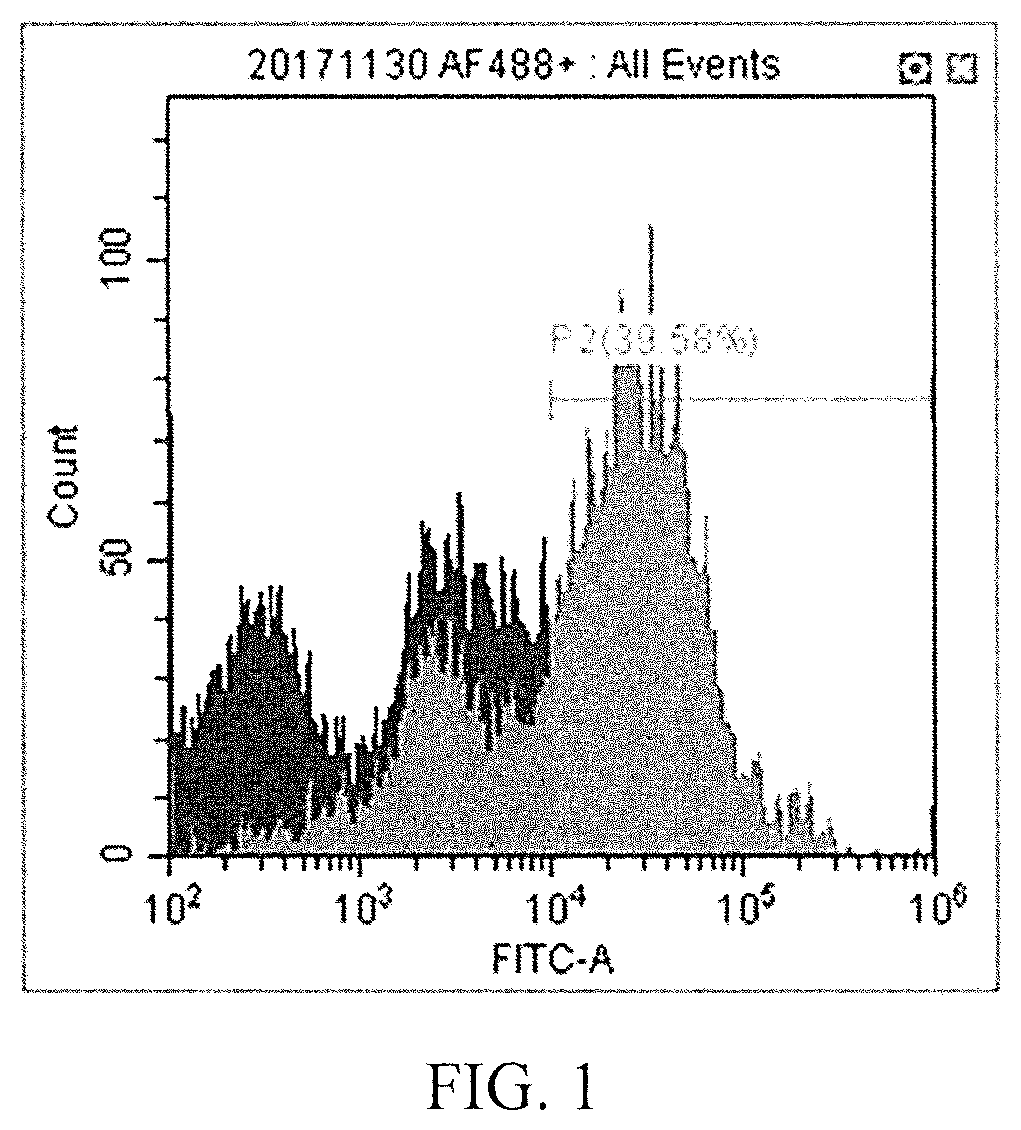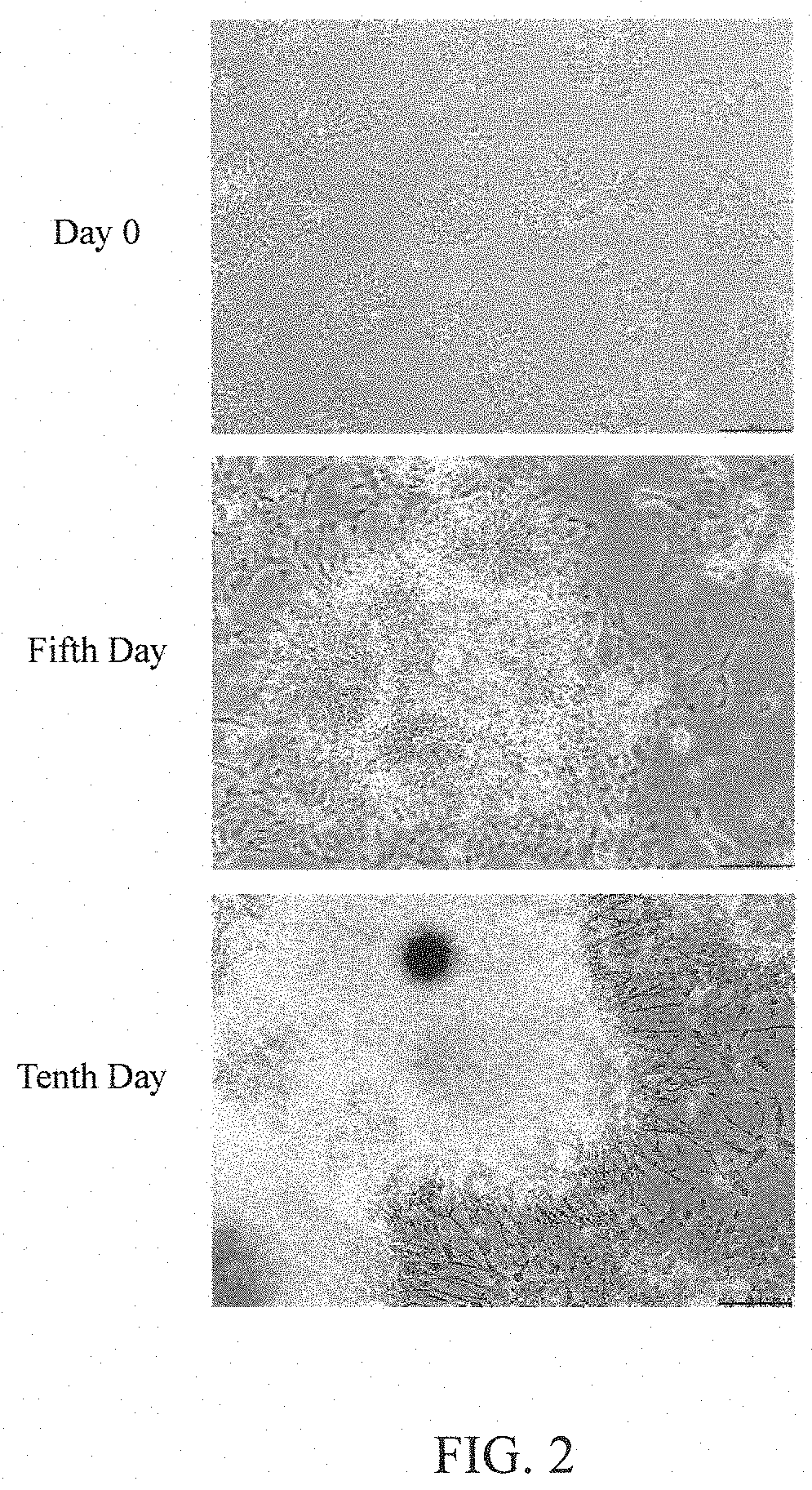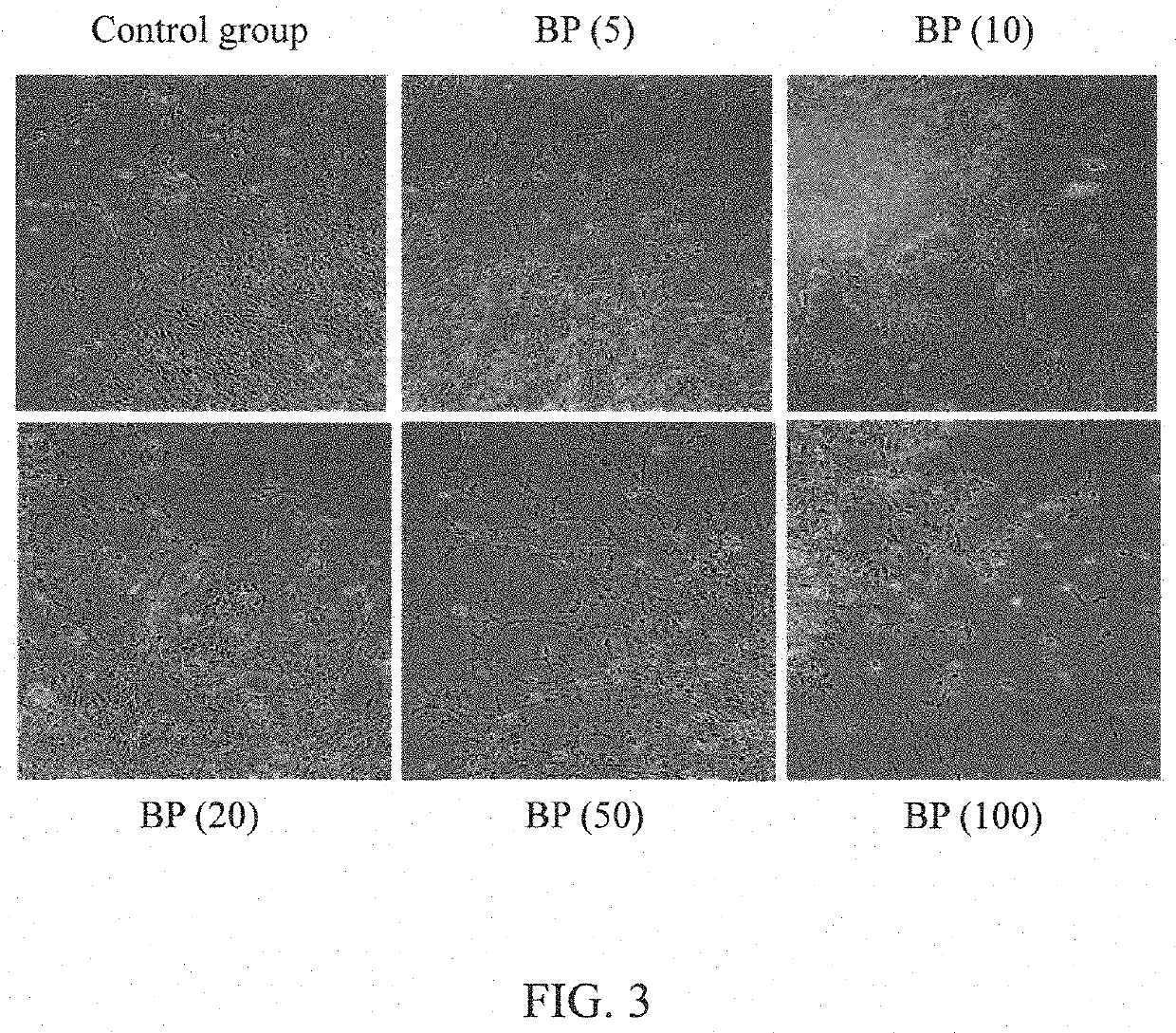Use of n-butylidenephthalide in dopaminergic progenitor cell transplantation
a technology of dopaminergic progenitor cells and nbutylidenephthalide, which is applied in the field of dopaminergic progenitor cell transplantation, can solve the problems of the therapeutic effect that can be provided by l-dopa or a more invasive stimulation treatment is rather limited, and the majority of dopaminergic neurons still aggregate in the neurosphere and fail to migrate out of the neuro
- Summary
- Abstract
- Description
- Claims
- Application Information
AI Technical Summary
Benefits of technology
Problems solved by technology
Method used
Image
Examples
preparation examples
[0047]A. Preparation of a Conditional Medium
[0048]A-1.
[0049]A DMEM / F12 medium (Dulbecco's Modified Eagle Medium / Nutrient Mixture F-12; purchased from Gibco company, product number: 11320033), externally added with N2 supplement (purchased from Gibco company, product number: 17502048), was used as a basic medium and further added with the neural induction factors including BIO (purchased from Sigma-Aldrich company, product number: B1686), SB-431542 (purchased from Sigma-Aldrich company, product number: S4317), FGF-2 (purchased from Peprotech company, product number: 100-18B), Purmorphamine (purchased from Cayman Chemical company, product number: 10009634), and FGF-8b (purchased from R&D System company, product number: 423-F8) to the final concentrations of 0.5 μM BIO, 10 μM SB-431542, 10 ng / mL FGF-2, 1 μM Purmorphamine and 50 ng / mL FGF-8b, respectively, so as to provide a conditional medium.
[0050]A-2.
[0051]Another conditional medium was provided in accordance with [Preparation Exampl...
example 1
of n-Butylidenephthalide (BP) on the Differentiation Ability of Dopaminergic Progenitor Cells
[0062]To understand the influence of BP on the differentiation of dopaminergic progenitor cells into dopaminergic neurons, the differentiation process of the cells in control group provided by [Preparation Example C] was continuously taken from a JuLI™Br cell imaging analyzer (purchased from NanoEnTek company) (results are shown in FIG. 2), and the cell morphology in each group provided by [Preparation Example C] was taken from and recorded by an inverted microscope (purchased from Nikon company) when the cells were continuously cultured for six days (results are shown in FIG. 3).
[0063]As shown in FIG. 2, when the cells in control group (i.e., the dopaminergic progenitor cells untreated with BP) were continuously cultured for five days, the phenomenon of neural differentiation can be observed, and when the cells were continuously cultured for ten days, the cells have differentiated into the ...
example 2
of n-Butylidenephthalide (BP) on Promoting the Migration of Dopaminergic Neurons
[0064]To understand the influence of BP on dopaminergic neurons, when the cells in each group provided by [Preparation Example C] were continuously cultured for ten days, the cells were fixed and then subjected to fluorescent staining with the antibodies including Sox-1 (purchased from Santa Cruz company, product number: SC-17318), TH (tyrosine hydroxylase; purchased from Millipore company, product number: MAB152) and DAPI (diamidino-2-phenylindole; purchased from ThermoFisher Scientific company, product number: D1306), respectively (Sox-1 expresses in dopaminergic progenitor cells, TH expresses in dopaminergic neurons, and DAPI is a nuclear-specific dye). Then, the dopaminergic progenitor cells (green fluorescence), dopaminergic neurons (red fluorescence) and nuclei (blue fluorescence) were observed by an upright fluorescent microscope (purchased from Nikon company). The results are shown in FIG. 4.
[006...
PUM
| Property | Measurement | Unit |
|---|---|---|
| body weight | aaaaa | aaaaa |
| body weight | aaaaa | aaaaa |
| body weight | aaaaa | aaaaa |
Abstract
Description
Claims
Application Information
 Login to View More
Login to View More - R&D
- Intellectual Property
- Life Sciences
- Materials
- Tech Scout
- Unparalleled Data Quality
- Higher Quality Content
- 60% Fewer Hallucinations
Browse by: Latest US Patents, China's latest patents, Technical Efficacy Thesaurus, Application Domain, Technology Topic, Popular Technical Reports.
© 2025 PatSnap. All rights reserved.Legal|Privacy policy|Modern Slavery Act Transparency Statement|Sitemap|About US| Contact US: help@patsnap.com



